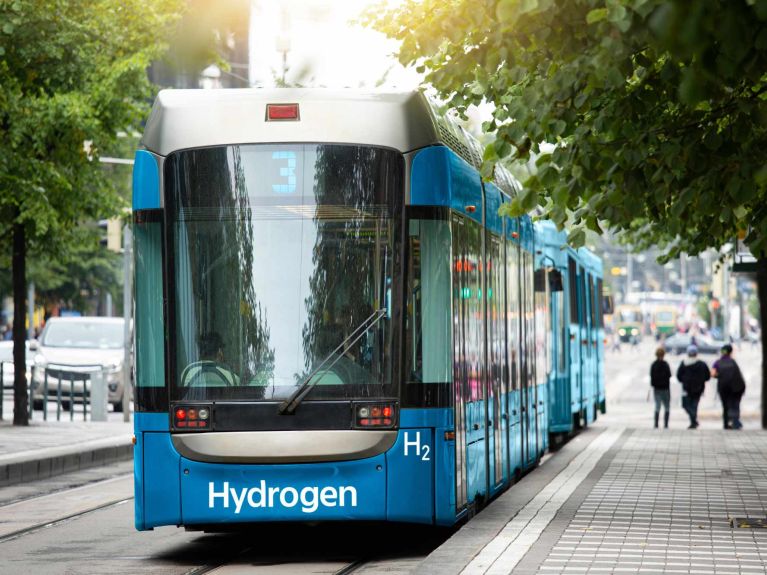Green hydrogen helps the climate
Hydrogen is important for achieving climate goals. Three projects are helping to make this sustainable energy marketable.

If Germany wants to achieve its climate protection targets, it needs green hydrogen. This is because hydrogen can be used to operate the biggest greenhouse gas emitters, such as in the chemical and steel industries, in a climate-friendly way or to produce or replace fuel for trucks, ships and aircraft. Green hydrogen is produced CO2-free because the electrolysis process, which breaks water down into hydrogen and oxygen, uses electricity only from renewable sources. The process, however, is expensive.
In three lead projects of the German government's National Hydrogen Strategy, industry and science are jointly developing solutions to make the climate-friendly energy source marketable and to enable its industrial production, transport and usability. Find out here what projects these are and what they aim to achieve.
Creating the conditions: H2Giga
H2Giga wants to support the mass production of electrolysers. They are needed to bring about a chemical reaction, electrolysis, with the help of electric current. Although efficient electrolysers already exist, most are manufactured by hand. To ensure that efficient, durable, robust, inexpensive and scalable electrolysers can be mass-produced in future, electrolyser manufacturers, suppliers from various technology sectors, research institutes and universities are working together on the H2Giga project.
Green hydrogen from the sea: H2Mare
H2Mare aims to produce green hydrogen directly on the high seas, because this is where the best conditions exist for generating climate-friendly electricity. Offshore wind farms supply green energy without the need for a complex grid connection: the water electrolyser is integrated directly into the wind turbine, thus reducing infrastructure costs quite significantly.
Enabling transport: TransHyDE
TransHyDE wants to develop a hydrogen transport infrastructure, because the energy source is rarely used where it is produced. In future, only part of green hydrogen will be produced in Germany itself; the significantly larger part will have to be imported from wind and sun-rich regions. Needed therefore are infrastructures for short, medium and long distances. TransHyDE will test various transport technologies in demonstration projects and analyse how they can be implemented on a large scale in future.
You would like to receive regular information about Germany? Subscribe here:


